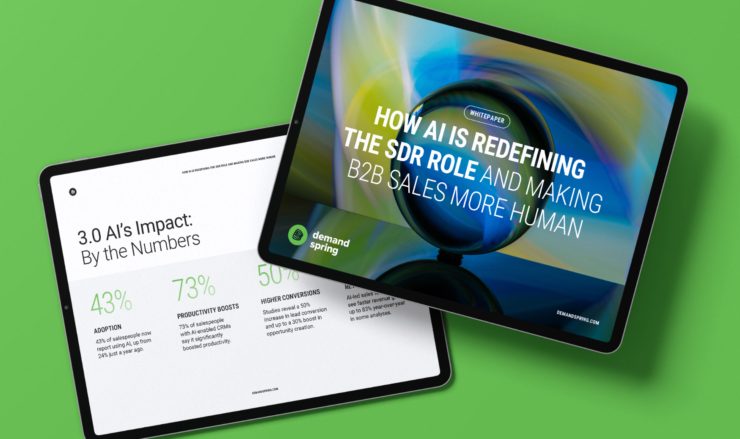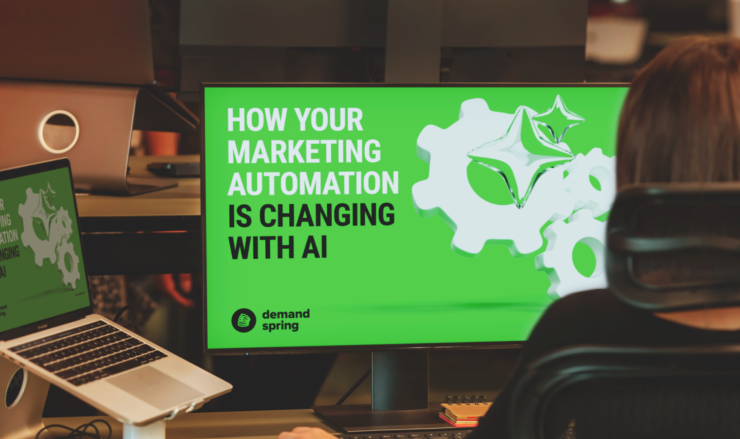Having spent years working closely with high-performing B2B sales organizations, I’ve consistently observed a familiar tension: the intense pressure on Sales Development Representatives (SDRs) to constantly fuel the pipeline.
For a long time, the playbook felt straightforward, almost a numbers game: more dials, more emails, more activity should equal more opportunities. However, I see many leaders acknowledging that this traditional volume approach is hitting a wall.
SDRs, who are absolutely crucial as that first point of contact, are dealing with significant burnout – a reality reflected in analysis of sales turnover benchmarks. Budgets get strained trying to scale headcount, and perhaps most importantly, our prospects are increasingly tuning out the noise of generic outreach.
This makes it absolutely vital, from my perspective, to understand the potential benefits of AI for SDR teams and to explore intelligent solutions like AI-Enabled SDR Performance Services to navigate these challenges effectively.
AI isn’t some far-off concept anymore; it’s actively reshaping the B2B sales landscape right now. It’s fundamentally changing how SDRs operate and succeed, forcing us to rethink the role entirely.
What I find most compelling is that this isn’t just about incremental improvements; it’s a true paradigm shift – moving away from just hitting activity numbers towards creating intelligent, impactful engagements. This aligns perfectly with the broader trends defining the future of B2B sales, which emphasize the need for data-driven precision and delivering richer, genuinely relevant interactions as part of what McKinsey calls a necessary ‘big reframe’.
From Volume Plays to Value-Driven Outreach: The AI Difference
It wasn’t long ago that scaling sales development primarily meant hiring more people. We all knew personalization was powerful (and research consistently shows a majority of business buyers now expect personalization as a baseline), but executing it manually across hundreds of prospects felt overwhelming, often impossible.
Lead prioritization? Too often, it was based on gut feel, static lists, or simply who was next in line, leading to valuable time spent on interactions unlikely to convert. Success was frequently measured by sheer output, sometimes losing sight of the real goals: building connections and driving meaningful progress.
This is where AI fundamentally changes the equation. It gives SDRs the leverage to make every interaction count – embedding relevance, personalization, and timeliness without sacrificing scale. We’re moving past the old trade-off between quality and quantity; the goal now is to achieve both.
Before diving into the specific advantages often cited, let me share a perspective honed from working directly with sales teams navigating this shift here at Demand Spring. We see AI not just as a tool for doing the same things faster but as a catalyst for fundamentally changing the game.
It’s about empowering SDRs to move beyond repetitive tasks and become true strategic contributors – focusing their valuable time and energy on high-impact conversations, building genuine rapport, and understanding buyer needs on a much deeper level. This shift from prioritizing activity metrics to focusing on impact metrics is where I believe the real competitive advantage lies, and it’s the core reason understanding AI’s capabilities is so critical right now.
Unpacking the Benefits of AI for SDR Teams: The Modern Advantage
With that strategic context in mind, let’s break down some of the key ways AI delivers tangible value for SDR teams:
- Hyper-Personalization, Scaled: Think about the power to analyze thousands of data points for each prospect – uncovering pain points, recent company news, relevant connections – almost instantly. AI provides this capability, helping draft tailored messaging that genuinely resonates. While the SDR always provides the crucial final human touch and editorial control, hours of laborious manual research simply melt away. This allows for personalization, the significant value of which we know directly impacts revenue, to be deployed effectively at a scale that was previously impossible. Getting this right truly multiplies growth potential.
- Intelligent Lead Prioritization: Forget static lists. AI enables dynamic lead scoring, synthesizing a rich tapestry of signals – from identifying active buying indicators by understanding buyer intent data (a crucial piece involving behavioral clues), to analyzing website engagement patterns and checking firmographic fit. This ensures SDRs consistently invest their expertise where it matters most – on prospects showing the highest likelihood to convert, making every outreach effort a “smart,” strategically sound interaction.
- Elevating Focus to Strategy and Connection: By automating many of the necessary but time-consuming tasks – think data entry, list building, basic follow-up sequences – AI liberates SDRs. Their valuable cognitive bandwidth shifts to higher-level activities: strategic account planning, building nuanced relationships, engaging in consultative conversations, and truly digging into prospect needs. This, in turn, allows leadership to evolve performance metrics, rewarding meaningful engagement and conversion quality over just raw activity. As firms like Gartner analyze the growing landscape of AI tools, we see more solutions designed specifically to augment these strategic capabilities.
- Decoupling Productivity from Headcount: The efficiency improvements here are significant. My experience, reinforced by industry data, shows that a single AI-equipped SDR can often manage the personalized outreach volume equivalent to two or even three traditional reps. This fundamentally “uncouples” pipeline growth from just adding more people, paving the way for more scalable, efficient growth and directly boosting ROI.
- Driving Consistency and Precision: In those repetitive, process-driven areas, AI significantly reduces the chance of human error. This means greater accuracy in data management and better adherence to communication standards and compliance protocols, ultimately protecting brand integrity.
Beyond Efficiency: Amplifying the Human Element
It’s absolutely critical to frame the AI narrative correctly. This isn’t about replacing people; it’s about profound augmentation.
While AI is brilliant at handling data processing and automating workflows, it simultaneously elevates the importance of uniquely human skills. The rapid adoption rates we’re seeing underscore AI’s value as a powerful enhancer of human capabilities.
In my view, the ability to handle ambiguity, build genuine trust, navigate complex discussions, apply critical judgment, and lead with empathy becomes even more valuable – and more differentiating – in an AI-assisted sales environment.
From what I’ve seen, the most successful AI implementations don’t diminish the human touch; they amplify it. They strategically redirect SDRs’ time and energy away from administrative burdens towards mastering the art of consultative conversation, asking insightful questions, and co-creating solutions with prospects.
This approach not only drives better business results but also demonstrably boosts rep morale – a absolutely vital element for retaining top talent in today’s market.
Ready to Explore Further?
We’re really just scratching the surface here regarding AI’s transformative potential in sales development. The deeper implications for how we structure teams, develop new skills, implement these tools effectively, and navigate the stages of AI maturity are all critical conversations for forward-thinking sales leaders today.
Join us for Part 2, where we’ll delve into why human empathy remains irreplaceable in complex B2B sales cycles and explore exactly how AI can free your team to focus on the high-value, relationship-driven work that truly sets your brand apart.




